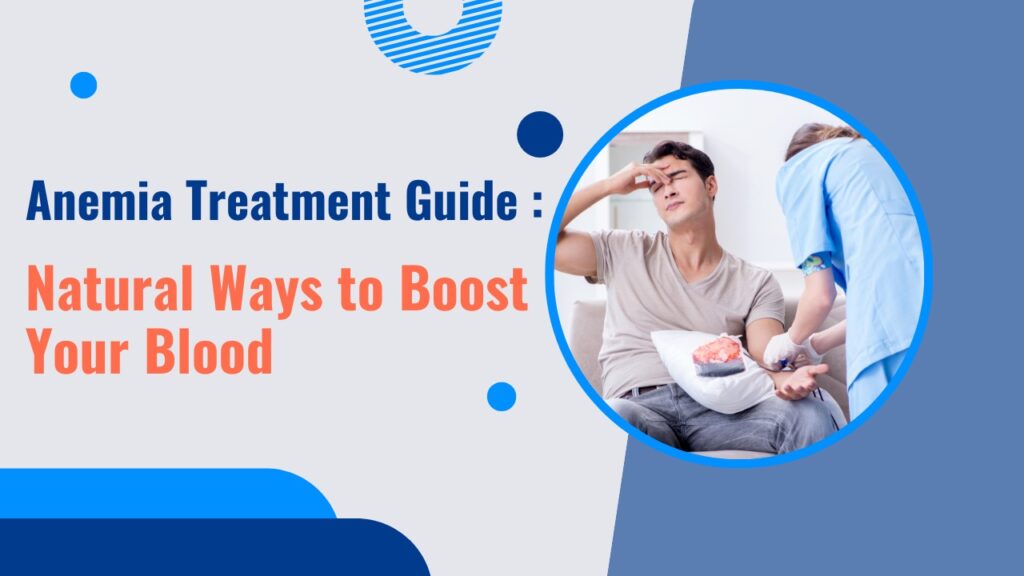Anemia is a widespread health condition that occurs when your body lacks enough healthy red blood cells to carry adequate oxygen to tissues. This can lead to fatigue, weakness, and shortness of breath. Among the different types, iron-deficiency anemia is the most common and often results from low dietary iron, poor absorption, or blood loss.
The encouraging news is that natural anemia treatment options can be highly effective. Increasing the intake of iron-rich foods like red meat, lentils, spinach, and fortified cereals can help restore iron levels. Pairing these with vitamin C-rich foods enhances absorption, while avoiding inhibitors like tea and coffee during meals can further support recovery.
Beyond diet, lifestyle changes such as reducing stress, staying physically active, and getting enough sleep also support overall health and energy. For long-term anemia treatment, addressing underlying causes with the help of a healthcare provider ensures a safer and more sustainable recovery.
In this comprehensive guide, we will explore everything you need to know about anemia, including its causes, symptoms, and most importantly, the most effective natural anemia treatments. Whether you’re looking for ways to prevent anemia or seeking a cure without relying heavily on pharmaceutical supplements, this guide is for you.
What Is Anemia ?
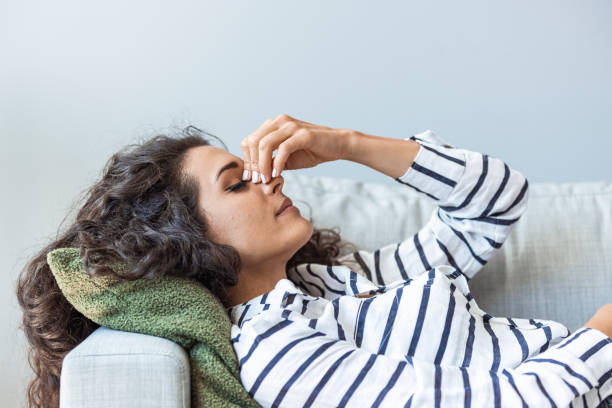
Anemia is a condition where your blood lacks enough healthy red blood cells or hemoglobin—the protein in red blood cells responsible for carrying oxygen throughout the body. When hemoglobin levels drop, the body’s tissues receive less oxygen, affecting energy levels and overall function.
This oxygen shortage can cause a variety of symptoms, including fatigue, weakness, shortness of breath, dizziness, and pale skin. The severity of these symptoms often depends on the underlying cause and how low the hemoglobin levels are. Identifying the type and cause of anemia is key to choosing the right anemia treatment.
Effective anemia treatment depends on the root cause. For iron-deficiency anemia, increasing dietary iron or taking supplements is often recommended. In more severe cases, treatment may involve addressing underlying conditions like chronic illness or vitamin deficiencies. Early diagnosis and proper anemia treatment can restore healthy red blood cell levels and improve quality of life significantly.
Types of Anemia
There are several types of anemia, each caused by different underlying factors. The most common is iron-deficiency anemia, which occurs when the body doesn’t have enough iron to produce adequate hemoglobin. This type is often due to poor diet, blood loss, or issues with iron absorption. It’s the most treatable form with dietary changes and iron supplements as part of the anemia treatment.
Another type is vitamin deficiency anemia, which results from low levels of vitamin B12 or folate. These nutrients are essential for red blood cell production, and deficiencies can lead to fatigue, nerve problems, or mental fog. Treating this type of anemia involves increasing vitamin intake through food or supplements as part of a targeted anemia treatment plan.
Chronic disease anemia and aplastic anemia are more complex types linked to long-term health issues or bone marrow problems. In these cases, anemia treatment may include medication, hormone therapy, or even blood transfusions depending on the severity.
Iron-Deficiency Anemia – Caused by low iron levels.
Vitamin Deficiency Anemia – Due to lack of vitamin B12 or folate.
Aplastic Anemia – A rare condition where the body stops producing red blood cells.
Hemolytic Anemia – Caused by destruction of red blood cells.
Sickle Cell Anemia – A genetic condition where red blood cells are abnormally shaped.
Causes of Anemia
Anemia can develop from a wide range of causes, all of which reduce the number of healthy red blood cells or hemoglobin in the blood. One of the most common causes is iron deficiency, often due to blood loss (such as from heavy periods or ulcers), poor dietary intake, or poor absorption of iron. This form is generally mild and can be corrected with proper anemia treatment focused on boosting iron levels.
Other causes include vitamin B12 and folate deficiencies, which hinder red blood cell production. These deficiencies may stem from a poor diet, digestive disorders like celiac disease, or certain medications. In these cases, effective anemia treatment involves supplementing the deficient vitamins and addressing any absorption issues.
Chronic diseases such as kidney disease, cancer, or autoimmune disorders can also impair the body’s ability to produce red blood cells. These cases may require more complex anemia treatment plans, including medication, lifestyle changes, or managing the underlying condition.
Some common causes of anemia include:
Poor diet (lack of iron, folate, B12)
Chronic blood loss (menstruation, ulcers, hemorrhoids)
Poor absorption (celiac disease, gastric surgeries)
Pregnancy (increased demand for iron)
Chronic diseases (kidney disease, cancer)
Genetic factors

Signs and Symptoms of Anemia
Anemia presents with a variety of signs and symptoms, depending on its severity and underlying cause. One of the most common symptoms is fatigue, as the body lacks the oxygen it needs to function properly. Individuals may also experience weakness, dizziness, or lightheadedness, especially during physical activity or when standing up quickly.
Other noticeable signs of anemia include pale or yellowish skin, cold hands and feet, shortness of breath, and a rapid or irregular heartbeat. In some cases, people may also experience headaches, brittle nails, or difficulty concentrating. These symptoms occur due to reduced oxygen supply to vital organs and tissues.
Recognizing these signs early is crucial for timely anemia treatment. If left untreated, anemia can worsen and lead to complications such as heart problems or severe exhaustion. With proper diagnosis, anemia treatment can be started promptly, often involving dietary changes, supplements, or medical therapy tailored to the specific type of anemia.
Anemia can be silent in its early stages, but as it worsens, symptoms become more noticeable:
Constant fatigue and weakness
Pale or yellowish skin
Shortness of breath
Cold hands and feet
Dizziness or lightheadedness
Headaches
Fast or irregular heartbeat
Brittle nails
Restless legs syndrome
Poor concentration
Diagnosis and Medical Testing
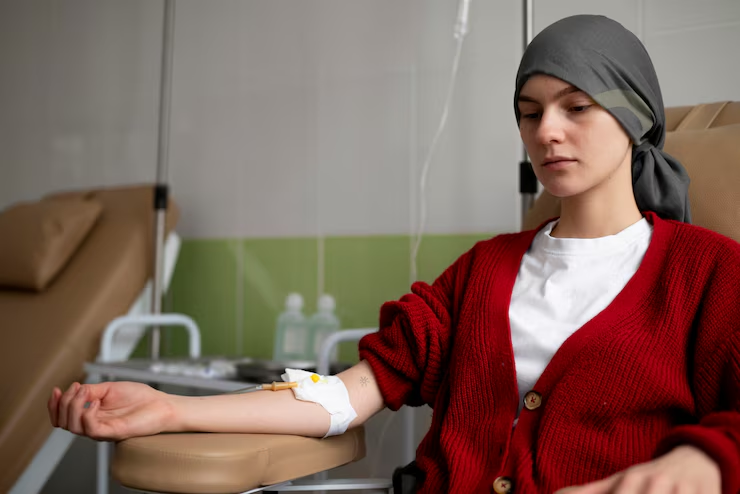
Diagnosing anemia begins with a thorough medical evaluation, including a review of symptoms, health history, and dietary habits. Doctors typically order a complete blood count (CBC) test, which measures levels of red blood cells, hemoglobin, and hematocrit. Low values in these areas can indicate anemia and help determine its severity.
Further testing may be required to identify the cause. These may include tests for iron, vitamin B12, and folate levels, as well as checks for internal bleeding or chronic conditions. For women, gynecological assessments might be necessary to rule out menstrual-related blood loss. Accurate diagnosis is essential for determining the appropriate anemia treatment.
Once the cause is identified, a personalized anemia treatment plan can be developed. This may include iron or vitamin supplementation, dietary adjustments, or treatment of underlying health issues. Early diagnosis through medical testing ensures faster recovery and helps prevent long-term complications associated with untreated anemia.
To confirm anemia, a doctor may order:
Complete Blood Count (CBC) – To check red blood cell levels.
Serum Ferritin – To measure iron stores in the body.
Vitamin B12 and Folate levels
Peripheral Blood Smear
Reticulocyte count
Top Natural Treatments for Anemia
Iron-Rich Foods
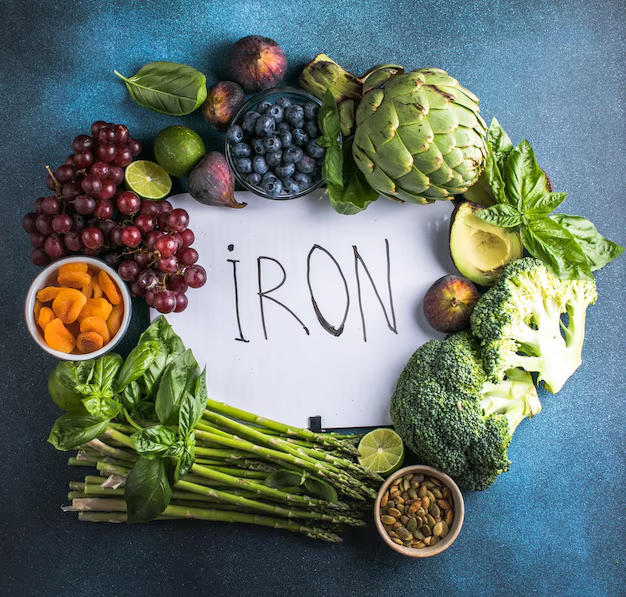
Iron-rich foods are a foundational part of effective anemia treatment, especially for those with iron-deficiency anemia. Iron is essential for producing hemoglobin, the protein in red blood cells that carries oxygen. Without enough iron, the body can’t produce sufficient healthy red blood cells, leading to fatigue and weakness.
Diet is the cornerstone of natural anemia treatment. Include more of these iron-rich foods:
Heme Iron (Animal sources – better absorbed):
Liver (beef or chicken)
Red meat
Shellfish (clams, mussels, oysters)
Poultry
Egg yolks
Non-Heme Iron (Plant-based sources)
Spinach
Kale
Lentils
Chickpeas
Tofu
Pumpkin seeds
Quinoa
Blackstrap molasses
Fortified cereals
Enhance Iron Absorption with Vitamin C
Enhancing iron absorption is a key part of successful anemia treatment, especially for those relying on non-heme iron sources from plant-based foods. Vitamin C plays a critical role in this process by converting iron into a form that’s easier for the body to absorb, making it essential for boosting iron levels naturally.
Vitamin C helps convert plant-based iron into a form more readily absorbed by the body
Pair iron-rich meals with:
Citrus fruits (oranges, lemons, grapefruits)
Strawberries
Bell peppers
Tomatoes
Broccoli
Boost B12 and Folate Intake
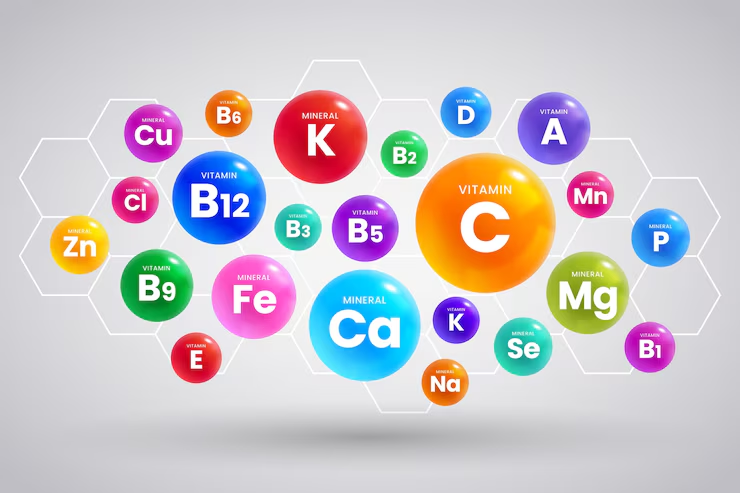
Vitamin B12 and folate are essential nutrients for red blood cell formation and play a key role in effective anemia treatment. A deficiency in either of these can lead to megaloblastic anemia, where red blood cells are larger than normal and fewer in number, resulting in reduced oxygen transport and fatigue.
Both nutrients are essential for red blood cell production.
Vitamin B12 sources:
Meat and poultry
Fish (tuna, salmon, sardines)
Eggs
Dairy products
Fortified nutritional yeast (great for vegans)
Folate-rich foods:
Dark leafy greens
Avocados
Beets
Legumes
Bananas
Use Herbal Remedies
Herbal remedies have long been used as natural support for anemia treatment, particularly in mild to moderate cases. Certain herbs help stimulate red blood cell production, enhance iron absorption, and support overall blood health. When used alongside dietary changes, these natural remedies can be a gentle yet effective way to restore vitality.
Several herbs have been used traditionally to boost red blood cell production and improve iron absorption.
Nettle leaf – Rich in iron, vitamin C, and chlorophyll.
Dandelion root – Supports liver health and iron metabolism.
Yellow dock root – Traditionally used to increase hemoglobin.
Ashwagandha – Helps with fatigue and supports the body in stress-related anemia.
Moringa leaf powder – High in iron, calcium, and protein.
Spirulina – A blue-green algae rich in iron and B vitamins.
Eat Iron-Friendly Meals Throughout the Day
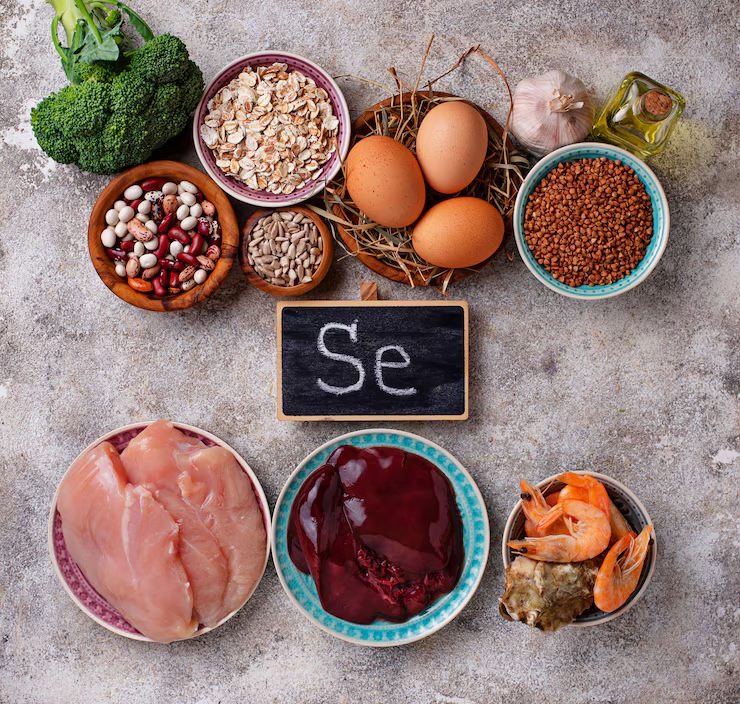
Eating iron-friendly meals throughout the day is a smart and sustainable approach to support effective anemia treatment. Instead of relying on one large iron-rich meal, spreading iron intake across breakfast, lunch, and dinner helps maintain steady iron levels and improves absorption.
Instead of eating large amounts of iron-rich food at one time, spread your intake across meals:
Example meal plan:
Breakfast: Oatmeal with raisins, a sliced orange, and a teaspoon of blackstrap molasses.
Lunch: Lentil soup with kale, a side of quinoa salad, and bell pepper slices.
Dinner: Grilled chicken liver, steamed spinach, and sweet potato.
Snacks: Pumpkin seeds, dried apricots, a banana smoothie with moringa powder.
Foods and Substances to Avoid
When managing anemia, knowing what to avoid is just as important as knowing what to eat. Certain foods and substances can interfere with iron absorption, making your anemia treatment less effective. Identifying and minimizing these inhibitors can significantly improve your body’s ability to utilize dietary iron.
Calcium-rich foods like milk, cheese, and yogurt can block iron absorption when consumed alongside iron-rich meals. Similarly, beverages like coffee, tea, and red wine contain polyphenols and tannins, which bind to iron and reduce its uptake. For a successful anemia treatment plan, it’s best to consume these foods and drinks separately from your iron-rich meals.
Processed foods high in sugar and unhealthy fats may also hinder nutrient absorption and reduce overall diet quality. Focusing on whole, nutrient-dense foods while avoiding common inhibitors ensures better results from your anemia treatment and supports long-term health and energy restoration. Always pair iron wisely for maximum benefit.
Certain substances can inhibit iron absorption:
Calcium-rich foods (milk, cheese) – Avoid during iron-rich meals.
Tannins in tea and coffee – Delay consumption by an hour before or after meals.
Phytates in grains and legumes – Soak, sprout, or ferment to reduce their impact.
Antacids – May interfere with stomach acid needed for iron absorption.
Lifestyle Tips for Managing Anemia Naturally

Managing anemia naturally involves more than just eating the right foods—it requires a balanced, health-focused lifestyle. Simple habits like staying hydrated, getting adequate rest, and managing stress play a big role in supporting effective anemia treatment. Hydration helps your blood circulate efficiently, while rest gives your body time to rebuild red blood cells.
Regular physical activity, such as walking or light yoga, can also improve circulation and boost energy. However, it’s important not to overexert yourself if you’re feeling fatigued. Gentle exercise, combined with a nutrient-rich diet, enhances the overall effectiveness of natural anemia treatment by supporting oxygen flow and improving well-being.
Avoiding alcohol and smoking is equally important, as both can impair nutrient absorption and reduce red blood cell production. Prioritizing a calm, balanced lifestyle helps your body respond better to natural anemia treatment, promoting long-term recovery and maintaining healthy energy levels over time.
Stay Hydrated: Helps in optimal blood circulation.
Avoid Stress: Chronic stress can worsen nutrient absorption.
Regular Exercise: Stimulates red blood cell production.
Sleep Well: Essential for healing and recovery.
Limit Alcohol: Excessive drinking can reduce nutrient absorption.
Long-Term Management and Prevention
Long-term management and prevention of anemia require consistent attention to diet, lifestyle, and underlying health conditions. Maintaining a balanced diet rich in iron, vitamin B12, and folate is essential for supporting ongoing red blood cell production. Incorporating a variety of whole foods ensures your body receives the nutrients it needs for effective anemia treatment and prevention.
Routine medical checkups are also crucial in monitoring blood levels and catching any signs of recurrence early. If you have chronic conditions or a history of anemia, staying proactive with regular testing and healthcare support can make a big difference. Supplementation may still be necessary in some cases as part of continued anemia treatment.
Prevention is just as important as treatment. Healthy lifestyle habits—such as staying active, managing stress, and avoiding iron blockers like excess caffeine or alcohol—support long-term success. With consistent care, the need for ongoing anemia treatment may be reduced, helping you stay energized and healthy for life.
Natural anemia treatment is not just about short-term correction but also long-term prevention. Here’s how:
Maintain a balanced, nutrient-rich diet.
Include fermented foods like sauerkraut, kefir, or yogurt to improve gut health and nutrient absorption.
Monitor menstrual flow and consider natural hormonal support if bleeding is excessive.
Supplement wisely and under supervision.
Periodic blood tests to monitor hemoglobin and ferritin levels.
Address underlying causes such as ulcers or digestive issues.
When To Seek A Doctor For Anemia Treatment

Knowing when to see a doctor is crucial for timely and effective anemia treatment. If you experience persistent symptoms such as fatigue, dizziness, shortness of breath, pale skin, or cold hands and feet, it’s important not to ignore them. These signs could indicate a significant drop in red blood cell count or hemoglobin levels.
A healthcare professional can conduct blood tests like a complete blood count (CBC) and assess iron, vitamin B12, and folate levels to diagnose the type and severity of anemia. Identifying the root cause is essential to selecting the right anemia treatment, whether it involves supplements, dietary changes, or further medical interventions.
Delaying medical attention can lead to more serious complications such as heart strain, chronic fatigue, or organ damage. Early diagnosis and personalized anemia treatment improve your chances of a full recovery and help prevent future episodes. Always consult a doctor if your symptoms persist or worsen.
Natural treatments are effective for mild to moderate anemia, but you should consult a doctor immediately if:
Symptoms worsen (extreme fatigue, chest pain, fainting).
You are pregnant or trying to conceive.
Your hemoglobin is below 9 g/dL.
There is unexplained blood loss.
You experience numbness, memory issues, or neurological symptoms (could indicate B12 deficiency).
Conclusion

Anemia can be both physically and emotionally draining, but it doesn’t have to control your life. With the right approach, many individuals find lasting relief through natural anemia treatment methods. Focusing on the root causes rather than just the symptoms allows for a more sustainable and effective path to recovery.
A nutrient-rich diet is central to natural anemia treatment. Consuming iron-rich foods like leafy greens, legumes, and lean meats, along with vitamin B12, folate, and supportive herbs such as nettle and yellow dock, can naturally rebuild your red blood cell count. Pairing these with healthy lifestyle habits like stress management, adequate sleep, and regular physical activity further boosts energy and overall wellness.
Remember, natural doesn’t mean slow or weak—when done properly, natural anemia treatment can be incredibly powerful. It not only helps restore your health but also prevents future relapses, empowering you to regain your strength and live fully.
FAQs
- What is the most common type of anemia and how is it treated ?
The most common type of anemia is iron-deficiency anemia. Anemia treatment typically involves increasing iron intake through diet or supplements, along with identifying and addressing any underlying causes like blood loss or poor absorption. Vitamin C-rich foods are also recommended to improve iron absorption. - Can anemia be treated naturally without medication ?
Yes, mild to moderate cases can often be managed naturally. Natural anemia treatment includes eating iron, B12, and folate-rich foods, using supportive herbs like nettle, and maintaining a healthy lifestyle. However, severe cases may still require medical intervention or supplementation. - How long does it take for anemia treatment to work ?
With proper anemia treatment, symptoms often begin to improve within a few weeks. However, it can take several months to fully restore iron levels and red blood cell count, depending on the severity and cause. - What are the side effects of common anemia treatments ?
Iron supplements, a common anemia treatment, can cause side effects such as constipation, nausea, or stomach cramps. It’s important to follow dosage instructions and speak with a healthcare provider for personalized advice. - When should I see a doctor for anemia symptoms ?
You should consult a doctor if you experience ongoing fatigue, dizziness, pale skin, or shortness of breath. A professional diagnosis ensures the right anemia treatment is started early to prevent complications and promote full recovery.
